Mentoring is the in-thing today. There seems to be a profusion of those who want to or believe they can mentor others. The interesting thing is the name for the one who wants to be mentored. It is ‘mentee’. I tell anyone who wants to be mentored by me, ‘If you are demented enough to want me as your mentor, you will thenceforth be known as ‘mental’. I say this only partly in jest. Partly because most of the people that I have met in this context live under all sorts of romantic notions about what mentoring is and what the ‘ideal’ mentor should be like. Then, when they encounter someone like me, who may not fit their imaginary model, they are dissatisfied and try to change me to fit their fantasy. Needless to say, that never happens, and we part company.
The best thing in life is to start your career under a hard taskmaster. Anyone can teach you what to do. But hard taskmasters teach you standards. That is the biggest favor that anyone can do for you. Mentoring is perhaps the single most powerful evidence of love that one can wish for. The mentor is sharing his hard-earned life experience to teach you lessons that will help you all your life. And you get to learn those lessons relatively free of cost. I say ‘relatively’ because there is always a token cost to pay, but that goes with the territory and adds value because you can appreciate that you got something worthwhile. I don’t mean the fee you may pay a mentor but the pain of learning.
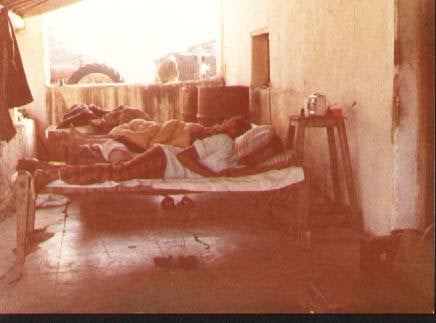
It was 1972 and I was 17 years old. As usual, I was in Sethpally with Uncle Rama on his farmhouse on the bank of the Kadam River. Farmhouse is a fancy word to describe one of the simplest homes that I have ever seen or lived in. In which lived a man who could afford something a thousand times better but didn’t because he didn’t care about material things and loved to live a simple life. The house was rectangular in shape with a central room which was also a passage to go from the veranda in front to the kitchen at the back. This central room had a square table with four chairs around it. It was supposed to be the dining room, but we never ate in it. The table was used as a surface to put anything we wanted handy. To one side in this room was a Westinghouse kerosene refrigerator in which we sometimes made ice cream. On either side of this central room were two equally sized rooms with windows in the outer walls. One looking out to the veranda in front and the other to the side of the house. In the front was a wide veranda that ran the whole length of the house. There was a two feet wide and three feet high parapet wall that enclosed the veranda. It acted as additional seating and a place to rest your feet and lean back in your chair, balancing it on its hind legs. On one side of the dining room door opening into the veranda was a long table with a bench on one side and the parapet wall as the seating, on the other. There were some rope cots on the other side of the veranda. All our meals, and most of our conversation was around this table on the veranda.
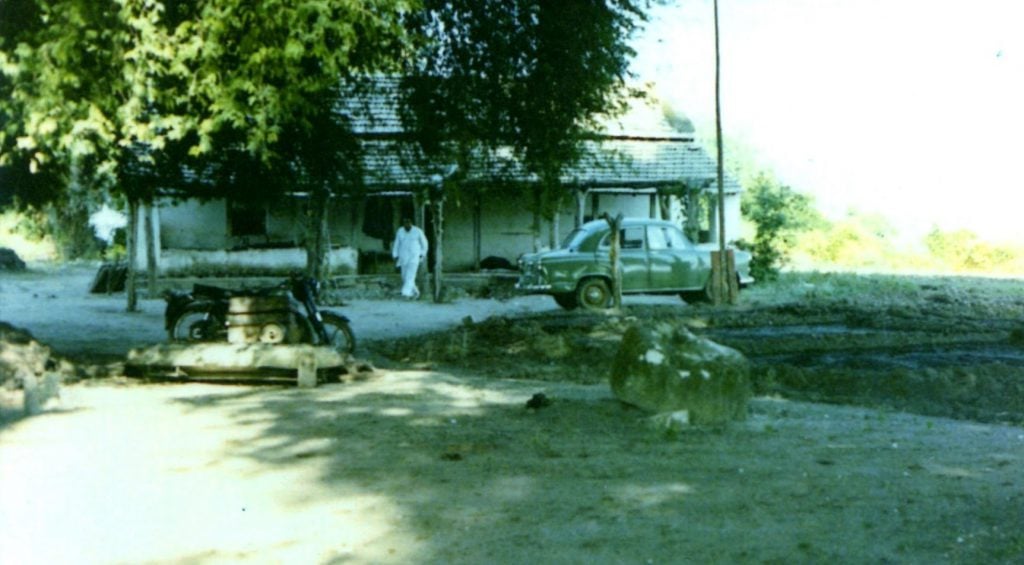
If you walked through the front door, across the dining room you would emerge on the back veranda on one side of which was the kitchen and on the other the bath-room. I am writing that deliberately as two words to emphasize that it was a room in which you bathed only. There was no toilet in it. You bathed in it if you didn’t want to bathe at the well in the fields a good bit away from the house. That was more fun, especially in the summer as you could look across the river to the jungle on the other side or at the low hills of the Sahyadri in the distance. The well had a low parapet wall all around and a paved apron.
I would stand on that apron in my lungi and Shivaiyya or whoever happened to be handy, would draw water out of the well in a bucket and pour it over my head. I would then soap myself thoroughly and my friend (these were Uncle Rama’s servants but were my friends with whom I used to wander around the jungles) would pour another bucket or two of water and my bath was done. The indoor bathroom was for the winter when it tended to get too cold to bathe outdoors. In winter Kishta would heat water and put half a bucket each of cold and hot water in the bath-room and I would mix the two to my liking and bathe indoors.
What about the toilet, you ask? Well, you took water in a lota (a pot-shaped utensil) and headed for wherever you liked where you could commune with nature, undisturbed. Then you dug a small hole in the earth, put two rocks or bricks on either side of it and squatted. After you had made your deposit, all the while enjoying the view, you washed yourself and filled in the hole. Organic manure and urea, great source of nitrogen for whatever was growing there. Hygienic, no smell and nothing you could step in.
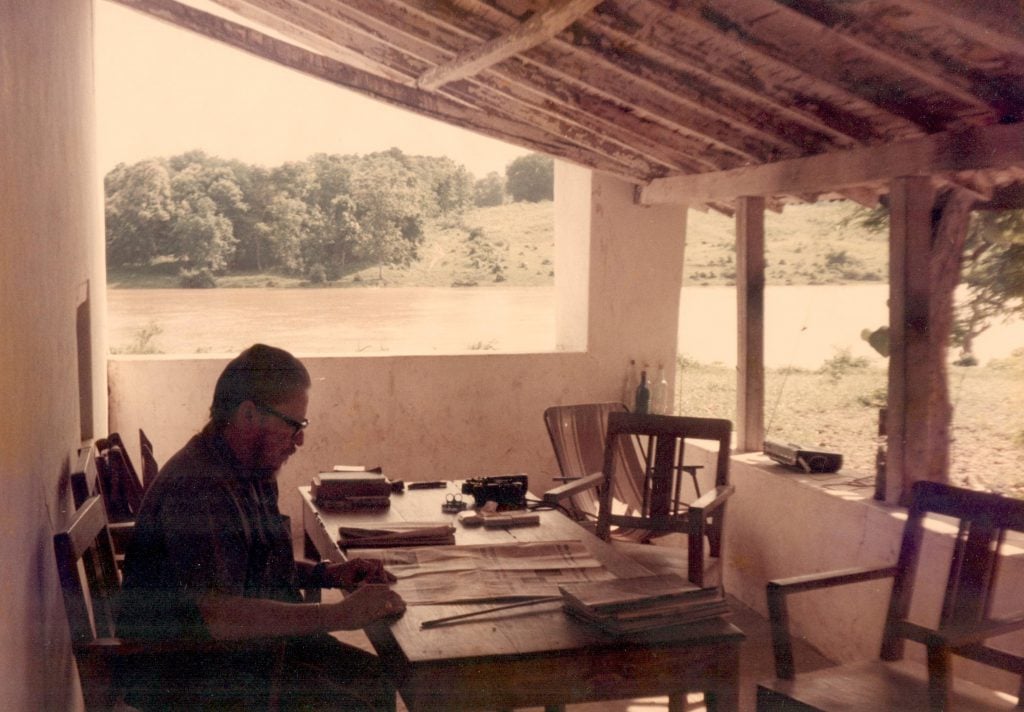
It was summer and I had been out the whole day. My routine was usually that I would leave the house at first light, having eaten a hearty breakfast of chapatties, eggs and a large mug of tea laced with plenty of sugar (I used to take sugar in my tea in those days) and go across the Kadam River into the forest. I would usually walk but on occasion Shivaiyya would take me in his bullock cart. The bullock cart is the most versatile vehicle known to man and can do everything except climb trees. Of course, it doesn’t have springs or shock absorbers and that is hard on your back and bones, but not when you are 17. On that day, Shivaiyya and I set off in the morning and took a long route that was a huge circle which would bring us back to the river in the evening. Summer days are long and so we had plenty of time. I was carrying a 7.62 Mauser bolt action carbine rifle with a 5-shot magazine and Shivaiyya was carrying a .22 BRNO rifle. Here is some history of these very versatile weapon. https://jggunsmith.wordpress.com/2019/09/30/a-bit-about-brno-22-rifles/ Shivaiyya was my gunbearer, guide and pal, all in one. I usually took two weapons, alternating between the 7.62 (which we called ‘8mm’ for short) and a 12-gauge shotgun, depending on what I planned to look for that day. Hunting was never my priority. My abiding love was and is to simply be in the forest and watch wildlife in action in their natural habitat.
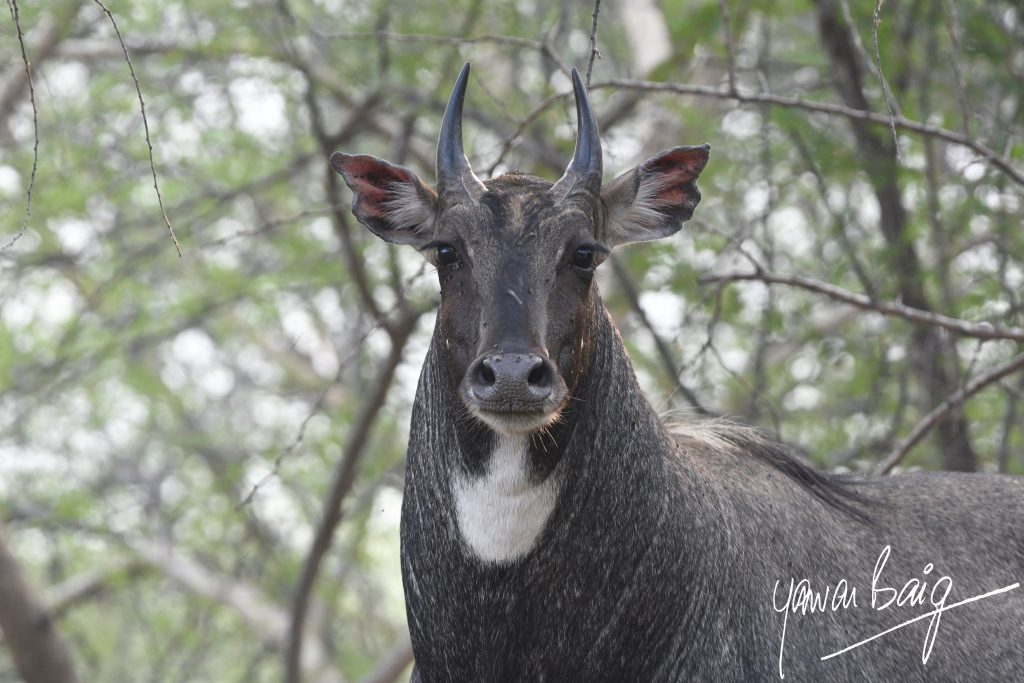
As it was, we were running out of meat and Uncle Rama told me to get a young Chital (Axis or Spotted deer – Axis axis) or Blue bull (Nilgai – Boselaphus tragocamelus) if I could, so I took the carbine. The .22 BRNO was for any small game like hare, duck or jungle fowl which if shot with the carbine would simply disintegrate and be worthless for the table. I carried the carbine as our first priority was the bigger animal, which if we shot anything else, would be disturbed with the sound and run away. The .22 was for the way back or at least for after I had shot the main quarry for the day.
It was a very hot day in the summer. Summer in the Sahyadri can be extremely hot with temperatures in excess of 45 Celsius. The deciduous forest in the foothills leading to the Kadam River is mostly teak, with a sprinkling of other species. In some places there were large clumps of bamboo. All these shed their leaves in summer and so the forest floor is carpeted with dry leaves. That makes moving noiselessly impossible. As you walk the leaves crumble loudly and make a racket loud enough to wake the dead. I walked ahead of Shivaiyya who sometimes guided me from behind. Either he would speak in a very low voice, just a word or two to ask me to either be careful or to turn one way or another. Or he would click his tongue or whistle if there was some animal or bird that he had seen but which I had missed. That didn’t happen very often, as I was very alert and trained in woodcraft by the greatest experts that I have ever known; Nawab Nazir Yar Jung and Uncle Rama (Mr. Venkat Rama Reddy).
From them I learned above all, respect for the forest and all those who live in it. Respect is the most important thing to learn, because it enables you to appreciate your surroundings. That means that you are not careless but take care to ensure that you don’t cause any damage to anything animate or inanimate. When you act like that, you automatically keep yourself safe. The second thing I learned was about the animals and plants of the place. I learned the names of plants and trees, what they are used for, where they grow, the seasons in which they change, what that indicates for us. I learned about their flowers and fruit and what they can be used for. For example, I learned about the Mahua flower, which is used to distill alcohol, and which is fleshy and sweet, and so when the Mahua is flowering, it attracts every bird and monkey in the vicinity. As they feed on the flower, they drop as much or more than they eat. That attracts bears, deer, Gaur and where they exist, elephants. In the Sahyadri there are no elephants but everything else is there.
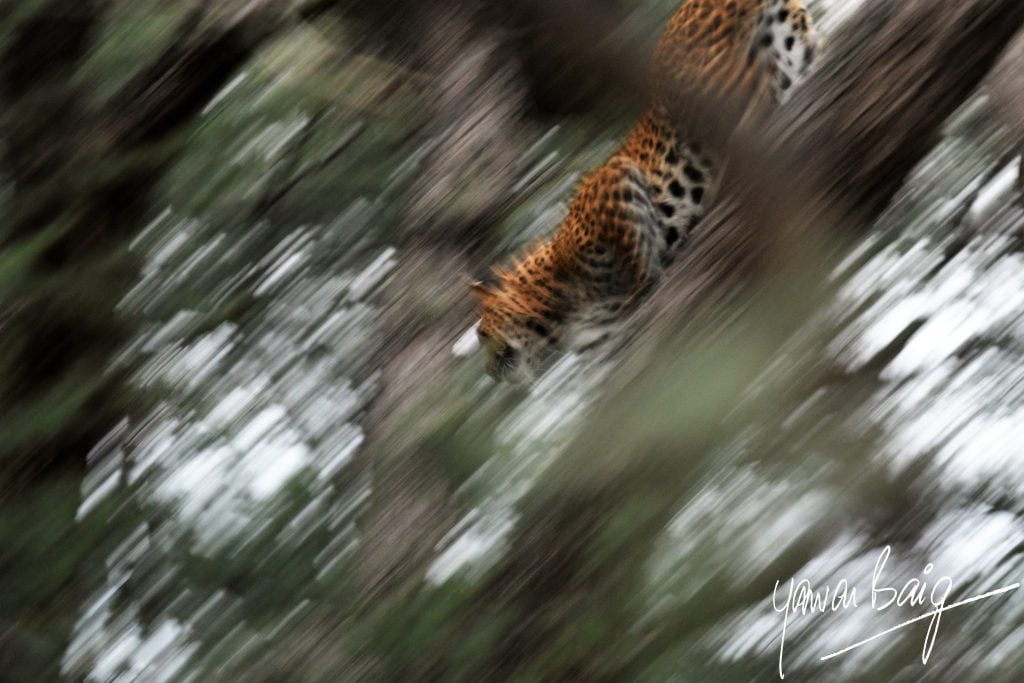
There are Banyan trees and other fig species which are a magnet for birds of all feather. There is the Beedi leaf tree, the Katha tree (Katha is made from its bark – that’s the brown stuff in Paan). There’s Strangler Fig, Lantana with its thick intertwined branches with small vicious thorns that are impenetrable. But beneath them, they form the ideal habitat for small animals and birds; mainly Grey Jungle Fowl and Wild boar. It is a funny sight to see Grey Jungle Fowl jumping up to reach the Lantana berries. When there are a few of them doing that, it is almost like a ballet with one going up and another down. Under the Lantana is a nice dry, secure world for Jungle Fowl to live and nest in. Wild boars are the only danger there, as they also lie up during the day under Lantana bushes. Leopards and Jackals go in after them sometimes but for the most part, the Lantana is a good guard of those who seek its shelter. There are clumps of Bamboo which attracts browsers like Sambar, Nilgai, Chital and Bison (Gaur). They love young shoots of Bamboo.
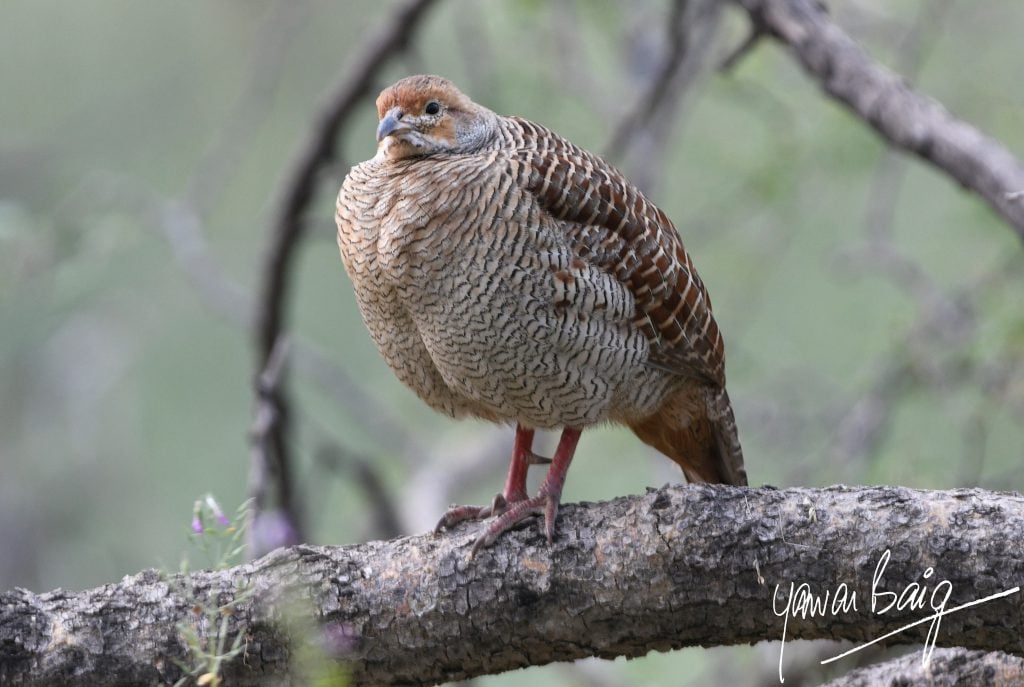
That day, I was walking ahead with the 8mm carbine and Shivaiyya was behind me with the .22 BRNO. We were going through some thick bush and I could see the open light of a clearing ahead. Forest clearings are usually productive as animals and birds feed in them, so I crept up very slowly towards it. As I came near, I could see that the land sloped away from me down into a dry naala (stream bed) with a large tree, felled in a storm, resting on the side of its crown. And on the top end of it was perched a large male peacock. It was not my plan to shoot anything before I could bag a Chital or Nilgai but the peacock was too much of a temptation. However, I was carrying the wrong weapon for it, so I signaled to Shivaiyya to come forward and give me the .22 BRNO. Unfortunately, he couldn’t see the peacock and I couldn’t warn him to stay silent, so as I took the .22 rifle from him, he stepped on a dry stick which snapped like a pistol shot. The peacock took off in a loud beating of wings and sailed off down the slope, long gone before I could bring the rifle up to take him down. A flying peacock is a beautiful sight and so I contented myself with enjoying that. And then to my frustration, a sounder of wild boar broke cover from one end of the clearing and trotted off, across it into the bush on the other side. I could only watch them go as I once again had the wrong weapon. Such is life sometimes. Teaches you the importance of preparation. Even where I had a legitimate excuse for not being prepared, it was a lesson to learn that excuses don’t change reality. A loss doesn’t turn to gain because you have a legitimate excuse.
By then it was almost midday and extremely hot. It was also a time when nothing moved as all animals would be lying up in shade, wherever they could find it. Shivaiyya and I also decided to rest for a couple of hours. We found a clump of bamboo halfway up the slope from a tributary of the Kadam River and sat in the patchy shade it provided. I had discovered that if you consciously decide to be one with your surroundings, you stop feeling hot. Don’t ask me for the physics of it. Maybe it is just in the mind, but who cares as long as it happens, right? When you simply sit and breathe deeply and relax you go into a sort of meditative, somnolent state which is very tranquil and peaceful. When you emerge from it, you are rejuvenated. As I sat there (I didn’t lie down as bamboo clumps are famous for snakes and ants), I did what I always do in such situations; listen to all the sounds around me and try to identify them. There are two benefits of this. For one, it is very interesting and adds to your knowledge about the forest and its denizens. And secondly it gives you information about who is about. That can be very important, especially if it is something you are looking for or something you want to avoid.
That day, the loudest sound I could hear, coming at me from all around, nature’s surround sound experience, was the Cicadas. They make a sound which is so loud that it can deafen you. This is what https://animals.howstuffworks.com/insects/question733.htm says about how Cicadas ‘sing’. “The apparatus used by cicadas for singing is complex. The organs that produce sound are called tymbals. Tymbals are a pair of ribbed membranes at the base of the abdomen. The cicada sings by contracting the internal tymbal muscles. This causes the membranes to buckle inward, producing a distinct sound. When these muscles relax, the tymbals pop back to their original position. Scientists still don’t fully understand how this apparatus produces such extreme volume.”
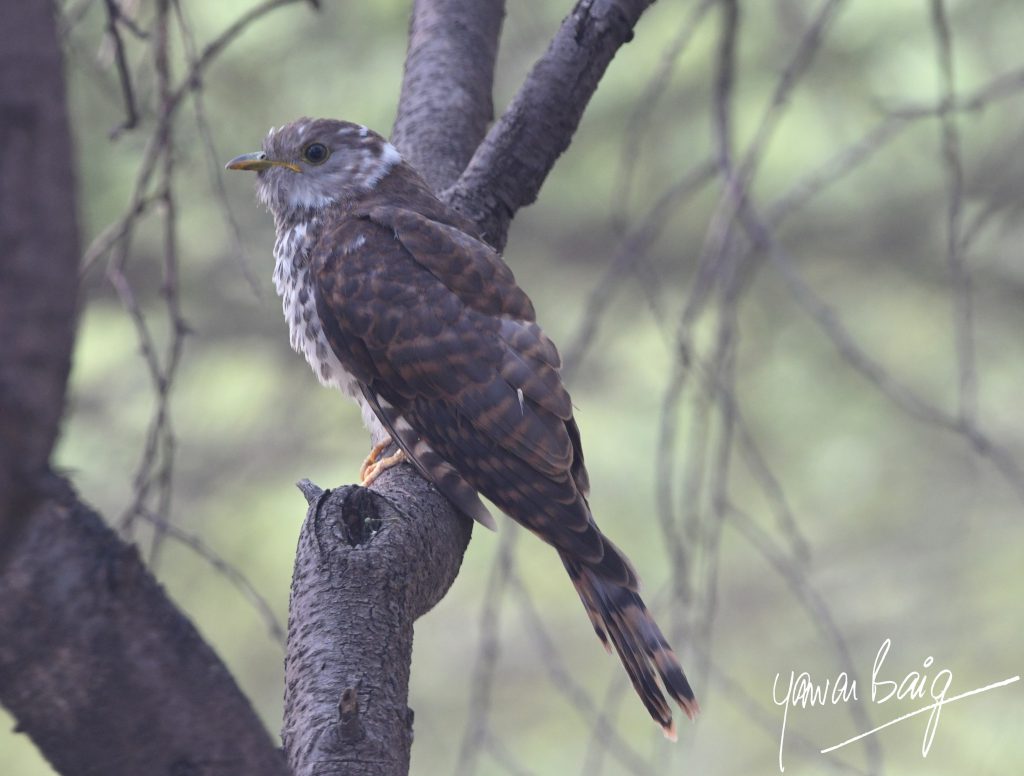
If I tuned out the Cicadas, which was not as simple as it sounds but can be done, I could hear the Brain-fever bird (Common Hawk Cuckoo – (Hierococcyx varius) whose call sounds like someone saying, ‘Brain fever’ in an ever-increasing pitch.https://youtu.be/bPqi5BcfETM
Shivaiyya and I ate our lunch. Chapattis and flat omelets with lots of onions and mango pickle. Washed down with lukewarm, sweet tea. Then both of us went into suspended animation, waiting for the sun to go down and the day to cool. About two hours later, when the sun was way past its zenith and on the way down to America, we gathered up our stuff and started our long way back home. I love walking at this time, as the long dusk comes on. It is much cooler than the day and animals start moving to go to water and then to graze or hunt as the case may be. If you walk in the forest at this time, as also at dawn, the chances of seeing game are very good. I walked ahead with the 8mm carbine and Shivaiyya came behind me with the .22 rifle and our tiffin carrier and water bottle slung on his shoulder.
We walked for perhaps three miles on a narrow winding footpath, made primarily by wildlife going down to the Kadam River to drink. Even in the hottest weather, the river had some pools in shady loops of its course which were visited by animals from all over the forest. There was no other water anywhere close, except the backwater of the Kadam Dam which was miles away. So, these pools were a very good place to see wildlife. The path took a dip and then went up a slight incline and over the top, down to the riverside. I was in the bottom of the dip walking up the incline when in the gathering dusk, I suddenly saw a Chital stag come up the path from the other side and crest the rise. The wind was blowing in my face, so he had no idea that I was on the same path as he was. I can’t say who was more surprised, but I snapped the carbine to my shoulder and fired. The shot hit him in the center of his chest. I saw the dust fly out of his hide. He snorted loudly and spun around and disappeared.
I was thrilled that my day was going to be successful after all and I would come home with some meat. Shivaiyya and I ran up the incline, expecting to see the Chital stag lying on the ground. I was in a hurry also because according to Islamic food laws, I had to slaughter the stag in the ritual way before it died, if I was to be able to eat the meat. But to my utter surprise and intense disappointment, there was no sign of the animal. It had simply vanished. Shivaiyya and I searched high and low in the rapidly falling dark to no avail. I knew I had hit him. There was some blood on the path, but it was light pink and frothy meaning that it had been hit through the lungs. His heart was intact and obviously no major bone was broken and his spine was also undamaged. The problem is that when an animal is shot with a high velocity rifle firing a solid bullet straight through the chest, it is entirely likely that the bullet goes through the animal, damages internal organs but does not break any bones. That means that often, given the massive flush of adrenaline in the animal, it could run for several hundred meters before it falls due to blood loss. There have been cases of large animals running for a couple of miles and some that perhaps lived for more than two days, before they eventually succumbed to the wound. A very painful way to die. Placing the shot is therefore very critical to successful hunting. In my surprise and hurry, that was the mistake I made.
By then it was completely dark and there was no chance of our finding the stag. Shivaiyya and I wound our way home, sad that we were returning empty handed. Uncle Rama would understand what had happened, I was sure. I was not thrilled about returning with a story instead of a quarry, but that was how life was sometimes. Or so I thought. I had no idea of the turn events would take to make that night one of the most memorable of my life.
We crossed the Kadam River, which was almost totally dry near the house, with a small trickle against the far bank which we could easily jump across without even wetting our feet. A far cry from the raging torrent filling the entire bed from bank to bank that it would become in the monsoon. As I climbed up the slope leading to the house, Uncle Rama was on the veranda and he called out in greeting to me, “Yawar baba, welcome back. Kya maray (what did you shoot)? I heard the shot.”
“I shot a Chital stag.”
“Shabaash (congratulations). Kaan hai (where is it)?”
“I lost it,” I said. And told him the whole story.
He listened in silence and said, “You are telling me that you wounded an animal and left it to die and you came home?”
“It got dark Uncle Rama. I couldn’t see anything. What could I do?”
“I am sorry, that doesn’t work. You never leave a wounded animal. You shoot straight and kill the animal outright or you follow up and finish it off. You never, ever leave an animal to die in pain because you couldn’t shoot straight.”
Well, I thought that was a bit hard, but he was the Boss, so I didn’t say anything. He said, “Right, now wash up and have your dinner and then go and get that Chital back.”
I was not sure that I had heard him right. It was almost 9 pm. By the time I’d had my dinner it would be 10 pm. He was telling me to go out into a forest with dangerous wild animals in the middle of the night to find and bring back an animal that I had wounded. Was I going to obey?
I don’t think the alternative even occurred to me. He was my mentor, I loved him very much and he loved me like his son. So, if he told me to do something, I did it, no question about it. I washed up. Kishta put the food on the table. Shivaiyya went to the back of the house to eat in the kitchen. When we had both eaten, I picked up the 8mm carbine. Uncle Rama said to me, “Don’t take that. Take the 12-bore shotgun. And take these (he gave me 4 buckshot cartridges). In the night you will only get to shoot at close range. No time to fool around with a rifle. Use this. At close range it will stop an elephant.” There was so much love (tough love alright) but love in this action of making me go into a dangerous environment but ensuring that I had everything I needed to be safe and survive. The fact that he even ordered me to go was a credit to me, that he trusted in my ability to take care of myself and treated me like a responsible adult and not just an irresponsible teenager.
Talk about mentoring? Here is mentoring for you. Teach, equip and trust. To trust means to give responsibility. Which was more ‘dangerous’? Me, taking care of myself or Uncle Rama having to explain to my parents that he had sent me out in the forest in the night and that is why I had been eaten by a tiger or bitten by a cobra? He knew that, yet he took a risk because he trusted me and needed to teach me a lesson that a gun was not a toy. Hunting was not about having fun killing animals. It was about behaving responsibly, taking ownership for your actions and accepting accountability, which means that if you make a mistake, you pay for it.
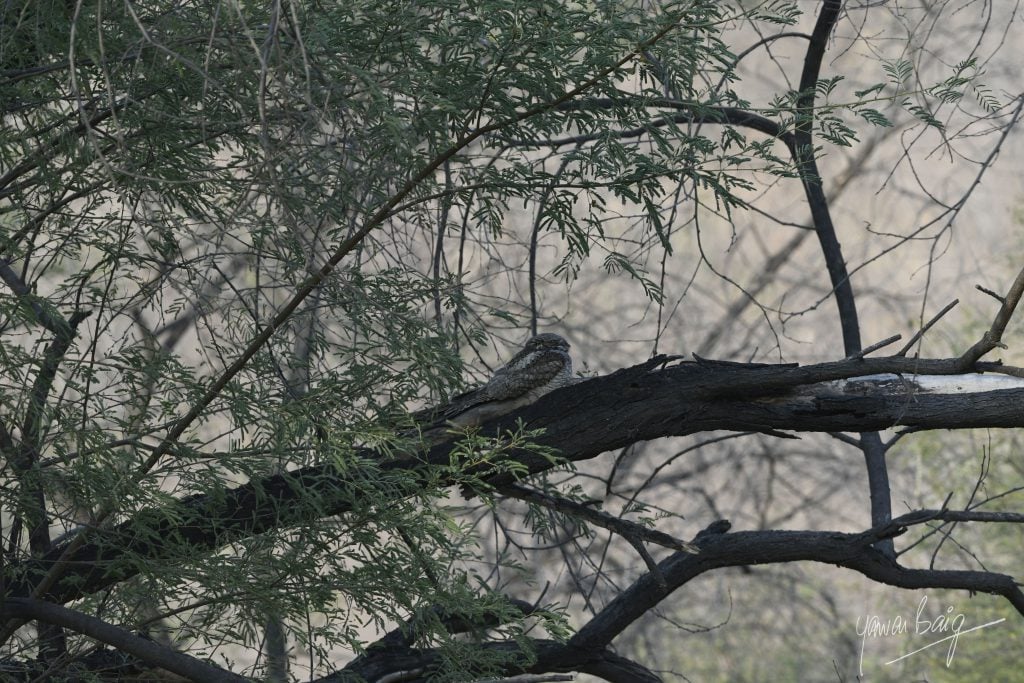
Shivaiyya and I left. There was a full moon, so the forest was a landscape of light and shadows. As we crossed the Kadam River bed I could hear the call of the Indian Nightjar (Caprimulgus asiaticus) https://youtu.be/CMzA8S2EJUc You can hear the call on this link. It sounds almost mechanical, as if made by a machine. A churrring that ends in clicks. Nightjars are nocturnal birds that get active when night falls and feed on beetles and other insects. They sit motionless on the ground on pathways or clearings and fly up in complete silence to catch the unwary insect which flies past. In the day, they roost in trees or rocky outcrops trusting to their beautiful camouflage to keep them safe. We came out of the riverbed and climbed the far bank and took the path leading to Shivaiyya’s village.
Shivaiyya was a realist (or was he acting on Uncle Rama’s secret orders – to this day I have no idea). He said to me, “Dora let us sleep in my village and go out with the dogs in the morning before the sun rises. We will get the stag then. Trying to find him in the night without dogs to follow the scent is impossible. Getting the dogs to go into the forest in the night is impossible. What do you say?” I learnt early in life, never to argue with elders who have more experience. So, I agreed. We walked the half mile to his village. His village was a haphazard collection of mud huts with untidy grass thatch roofs. The hut had one door and no windows, and the women usually cooked inside the hut. The fuel was dried cow-dung cakes. The Gonds, Shivaiyya’s tribe, had a large herd of scrub cattle whose main produce, believe it or not, was dung. Not milk. The cattle would be taken out to graze in the forest daily by little boys who would walk behind them and collect the dung they dropped. This would be mixed with grass, dry leaves and other debris and shaped into flat, round cakes which were sun dried on any handy surface in the village. When dry, they would be stacked indoors to keep them out of the rain and used as fuel. If dried properly, they made an almost smokeless fire. But that is only if they were totally dry. Otherwise the hut was full of smoke. In the night, the hut was not only home to the family but to two dogs, one goat and a young calf that was too young to be left outside with the other cattle.
It was into this hut that Shivaiyya, very kindly, invited me to sleep. I politely declined and asked him to put the rope cot that he offered me, outside the hut and said that I preferred to sleep in the open. He was not happy with that, as the forest was home to tigers, leopards and bears. But I was happier taking my chances with them than with sleeping inside the hut with its smoke and multiple smells. The smoke inside the hut was protection against mosquitos but my view was ditto about that as about tigers, leopards and bears. I lay on the rope net, covered myself with the goat-hair blanket that Shivaiyya used for himself, kept my shotgun handy and lay on my back looking at the sky. By this time, the moon had set, and the stars were out in their splendor. You must lie on your back in a forest without any ambient light and look up at the sky to understand the true magnificence of the night sky. As I lay there, I thought to myself that I was probably seeing things that didn’t exist. I mean, that the star that I may be looking at, could have ‘died’ millions of years ago, but I was ‘seeing’ it because its light reached me only now. Quite a sobering thought, if you ask me.
One of my great delights when spending a night in the jungle is to listen to the sounds as the time changes from morning to night and back from night to morning. During the day, especially during the hot months, the jungle is mostly a silent place, except for the cicadas and the Brain-fever bird; between the two of them it is actually possible to go crazy. But as the sun goes down and the day cools, the jungle comes alive and starts preparing for the night. Peacocks announce that it is time to start heading for the roosting places. The very loud mewing scream of the peacock has to be the most irritating sound in the world, but in the jungle, it seems completely in sync and not irritating at all. Jungle cocks – Gray Jungle Fowl in the Sahyadris and South India and Red Jungle Fowl in the North – then add their voices with their characteristic calls that end in a question – Cuk-coooo-ko-kuk? When one calls, another answers him. The hens are silent and leave it to the men to announce to the world that the day is coming to an end. Teetar (Partridge) then start to call and answer one another as they head towards their roosting places. Duck and (in season) geese flights start landing on the lake as they seek safety in the water. They stay on the water all night where nothing from the land can get at them. Geese are great talkers and you hear them before you see them as they come in their classic arrowhead formations and land on the lake, feet first, setting up little ski tracks on the surface before they settle their keels into the water.
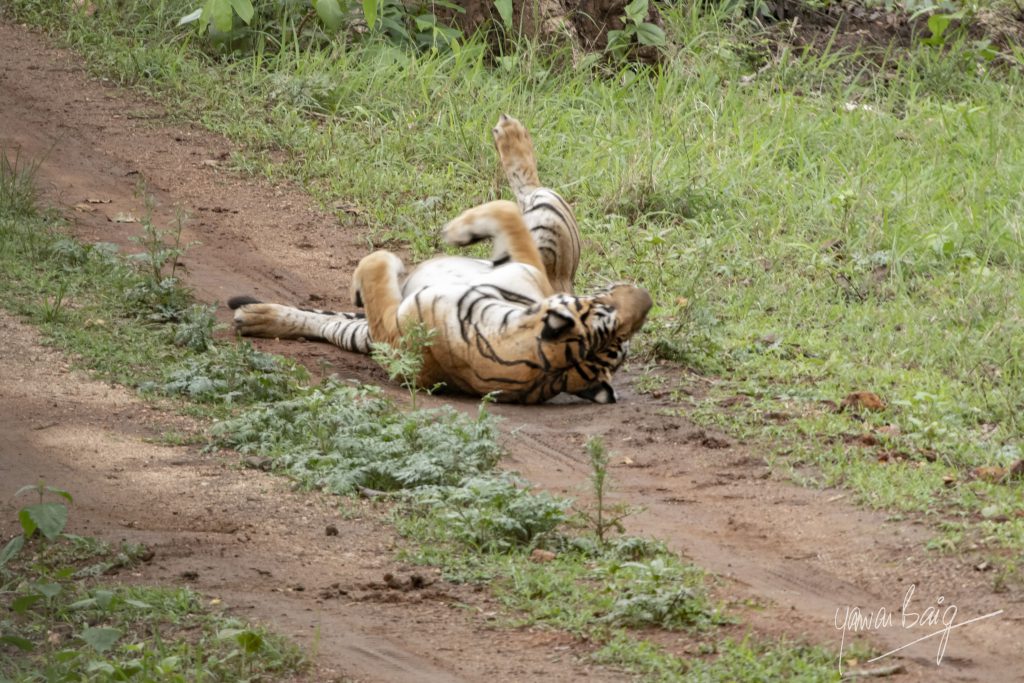
As the darkness sets in, the first animal calls come in. The Chital stag barks to let the world know that he has seen a leopard or a tiger. However, some young Chital are easily spooked and also tend to give the alarm call if they see a dog or a man. Chital usually follow Langur who have a symbiotic relationship with each other. Langur feed on top of trees and Chital eat what they drop from the top of leaves and fruit. I am not sure if there are any formal studies to support my observation of the relationship between Chital and Langur, but I have almost always seen them together, especially in the semi deciduous forests of the Sahyadris. More importantly, Langur always have a lookout whose only job is to sit in the topmost branches and watch for predators and give the alarm if he sees one. They take turns in doing this so that everyone in the troop gets to feed. Langur calls – Ghoonk, Ghoonk – are more reliable and Chital take them very seriously as the Langur lends perspective to the Chital’s pedestrian life. The most reliable of all alarm calls, though, is the deep belling of the Sambar. When the Sambar tells you that he has seen a tiger, you can take his word for it. What’s more, the Sambar will keep belling – Dhank, Dhank, Dhank – as long as the tiger is in view. If you have some experience, you can locate the tiger and tell which direction he is moving in, simply by listening to the Sambar calling. As the night passed, I dozed, being far more interested in listening to the sounds of the jungle than in sleeping. Sambar belled on the hill; a sure sign that a tiger was about. But that was a long way off from where I was, so nothing for me to be concerned about. In the forest sound carries a long way, especially if it is from a higher elevation. The night fell silent. I dozed and then it was daybreak.
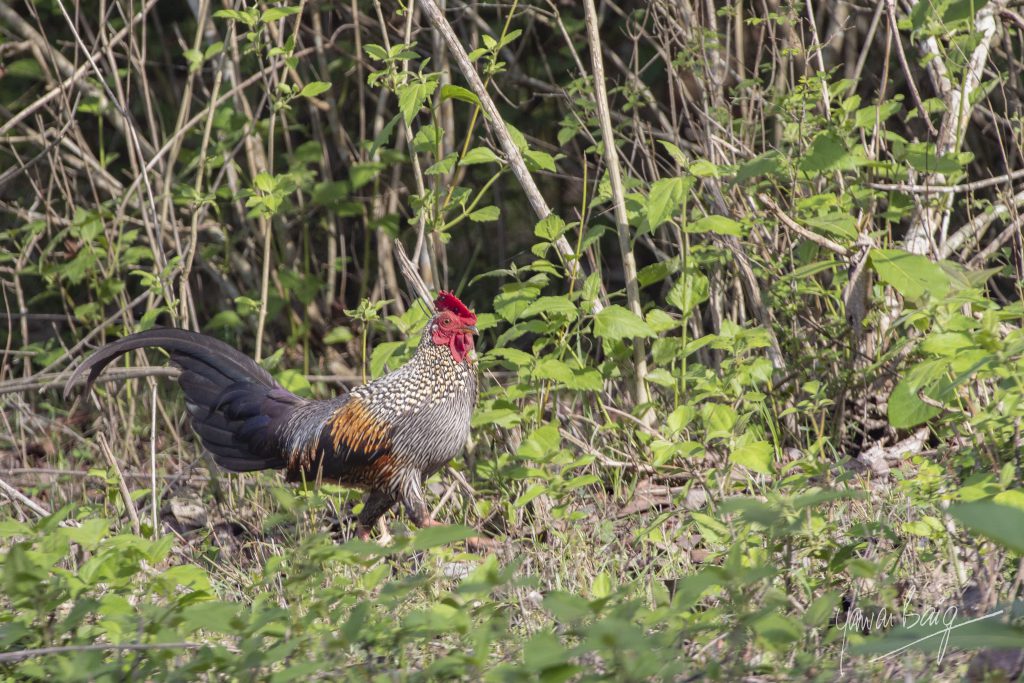
Mornings are equally magical in the jungle. The first calls are usually the Gray Jungle Fowl roosters, checking to see if it is really dawn. They do their more serious calling later when they come down from the trees, find a tree stump or rock and stand on it and call out a challenge to any other roosters in the vicinity. But the first calls are while it is still dark. The Langur wakes up and adds a hoot or two. The next are the Peacocks greeting the strengthening light. The Nightjars make the last of their –chukoorrrrr – calls as they settle in for their ‘night’. You may hear an owl or two. By now the light is better and Partridge start calling and Peacocks and Jungle Fowl add their calls to them. Chital and Sambar are generally silent now as most predators have settled in for their rest. If the occasional tiger is still getting to his layby, you may hear the Sambar who sees him, announcing his progress. Morning comes quickly in these parts and by about 5.30 am it is clear light. The duck and geese flights start as soon as the light starts to get stronger, headed for the fields of cultivated land where they feed all day with one goose always as a lookout. They take turns so that everyone in the flock gets to eat but when on sentry duty, they don’t slack in the slightest. A threat to life is a great motivator.
Shivaiyya came out of his hut by the time I’d completed my ablutions with sweet, milky tea, which we both drank in silent companionship. When we had finished and the light was stronger, he whistled to his dogs and we set off to find the Chital. These are the famous Indian ‘pie’ dogs. Small curs, with a very highly developed sense of smell, and a lot of wisdom living in the jungle where they are the favorite food of leopards. So only the clever ones live. We took the dogs to where I’d first shot at the Chital and they tracked it into a ravine where he had fallen and died the previous night. Not too far from where we had been looking for him but not having the dog’s sense of smell, we had no chance of finding him in the dark. As I had thought, my shot went straight through his lungs and out of the back. As it did not break any major bone, the animal ran away and there was also not much of a blood trail. It died eventually, but after running almost 200 yards and falling into the small ravine.
Such were my lessons in responsibility learned. Lessons about being responsible for my actions; for the consequences of my actions and of being ready to pay the price thereof. Much that I am grateful to Uncle Rama for. What remains most vivid in my memory is the way in which he taught me, even the painful lessons. Firm, but full of love and with a lot of respect.
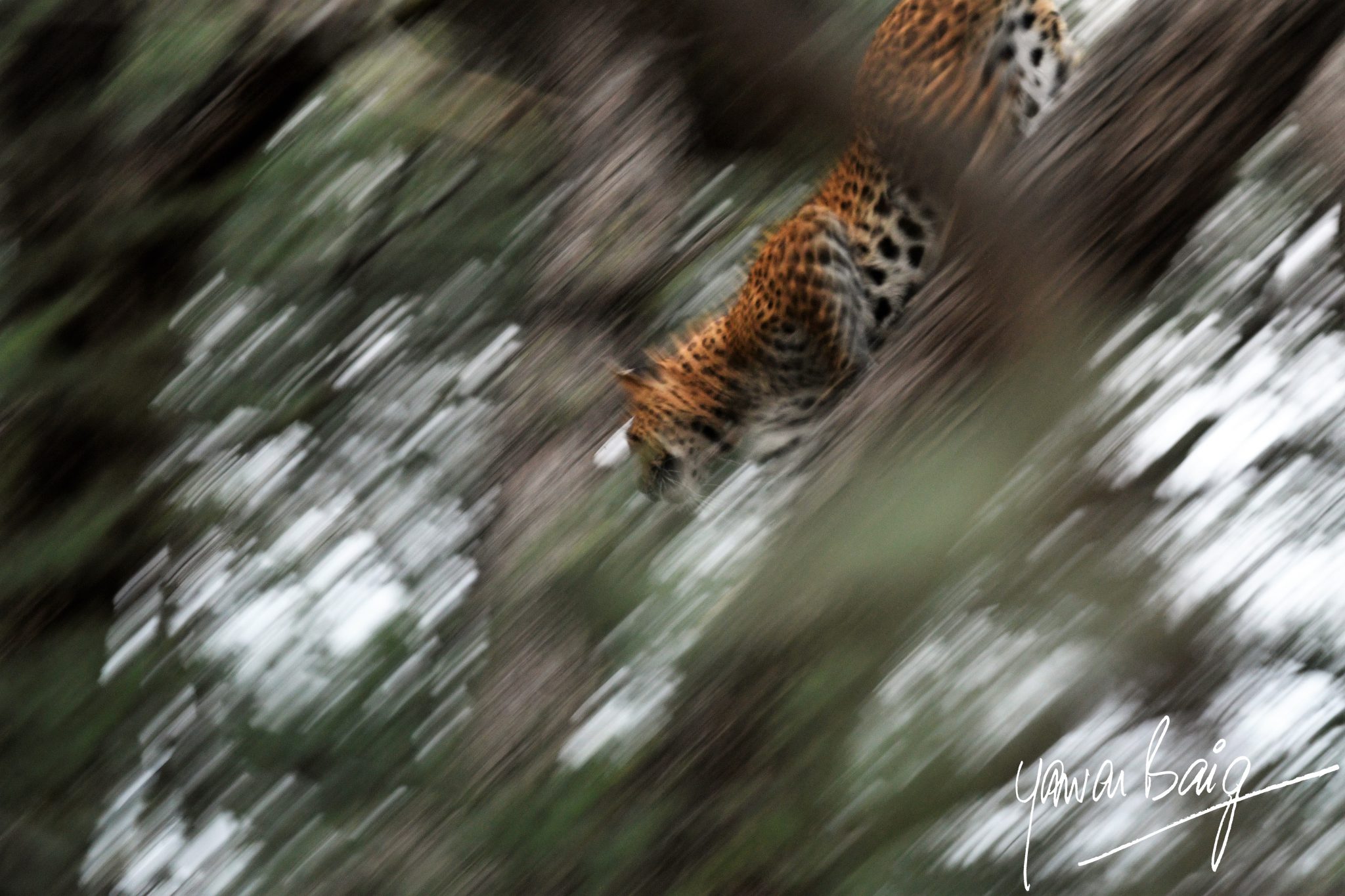
As salaamualykum Sheikh Yawar. A detailed account fit for a short story book for High School. Love the detail on the wildlife and the amazing pictures – really awesome in making the experience alive for the reader. I must say, I read with a different expectation of the hunt but, not disappointed at all at how it ended. My feelings of Uncle Rama is one of awe because his demeanour as described reflects a very contented person with a deep attachment to the value of life therefore, he was a great mentor. I guess he wanted to give that gift… Read more »